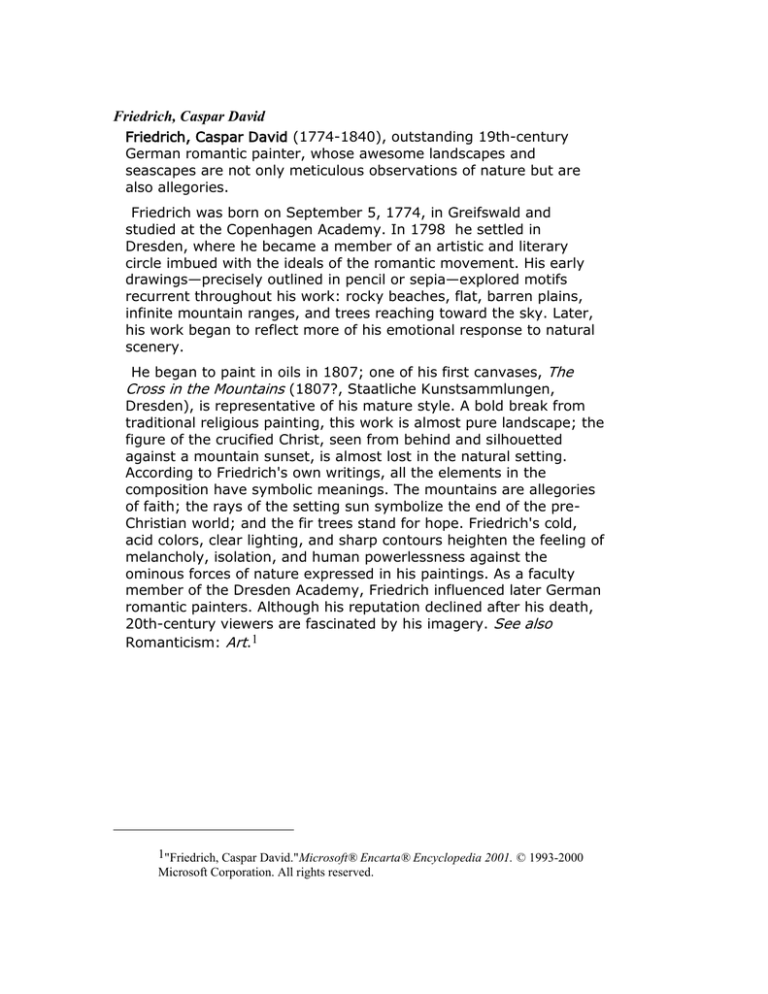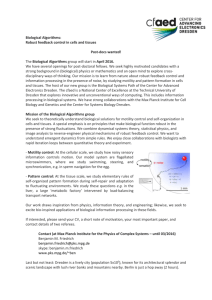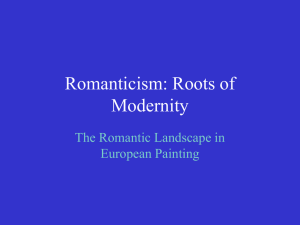
Friedrich, Caspar David
Friedrich, Caspar David (1774-1840), outstanding 19th-century
German romantic painter, whose awesome landscapes and
seascapes are not only meticulous observations of nature but are
also allegories.
Friedrich was born on September 5, 1774, in Greifswald and
studied at the Copenhagen Academy. In 1798 he settled in
Dresden, where he became a member of an artistic and literary
circle imbued with the ideals of the romantic movement. His early
drawings—precisely outlined in pencil or sepia—explored motifs
recurrent throughout his work: rocky beaches, flat, barren plains,
infinite mountain ranges, and trees reaching toward the sky. Later,
his work began to reflect more of his emotional response to natural
scenery.
He began to paint in oils in 1807; one of his first canvases, The
Cross in the Mountains (1807?, Staatliche Kunstsammlungen,
Dresden), is representative of his mature style. A bold break from
traditional religious painting, this work is almost pure landscape; the
figure of the crucified Christ, seen from behind and silhouetted
against a mountain sunset, is almost lost in the natural setting.
According to Friedrich's own writings, all the elements in the
composition have symbolic meanings. The mountains are allegories
of faith; the rays of the setting sun symbolize the end of the preChristian world; and the fir trees stand for hope. Friedrich's cold,
acid colors, clear lighting, and sharp contours heighten the feeling of
melancholy, isolation, and human powerlessness against the
ominous forces of nature expressed in his paintings. As a faculty
member of the Dresden Academy, Friedrich influenced later German
romantic painters. Although his reputation declined after his death,
20th-century viewers are fascinated by his imagery. See also
Romanticism: Art.1
1"Friedrich, Caspar David."Microsoft® Encarta® Encyclopedia 2001. © 1993-2000
Microsoft Corporation. All rights reserved.







